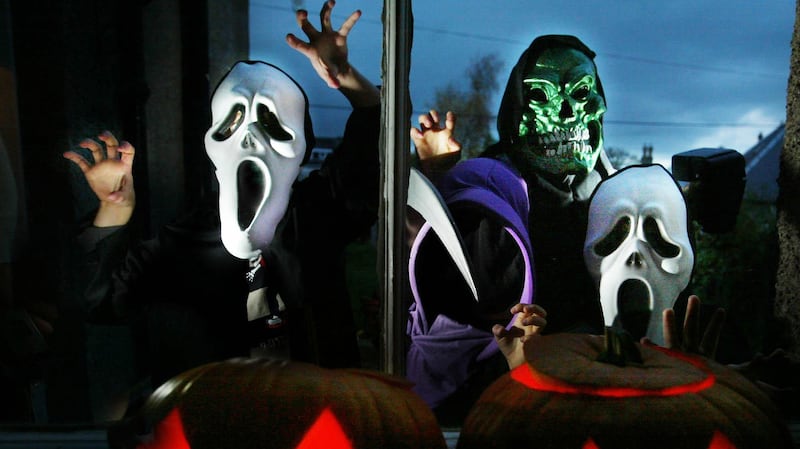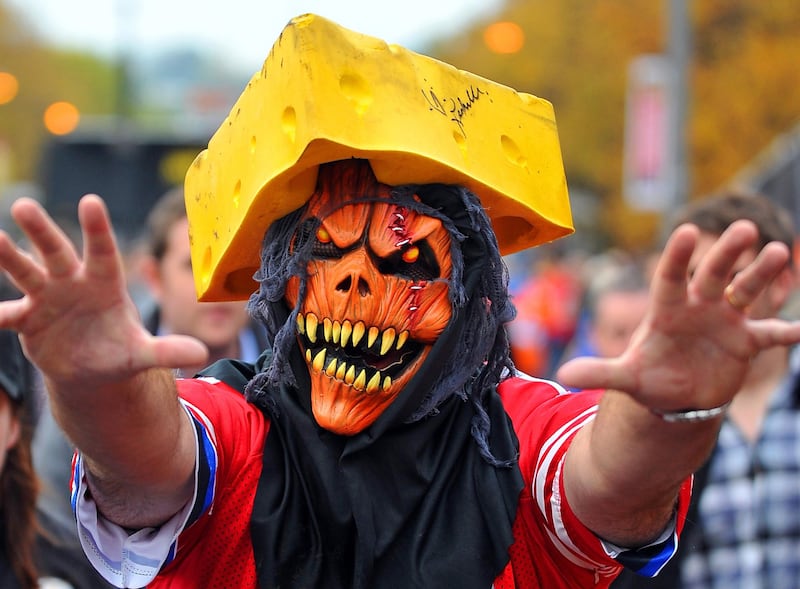The time has come for everyone – young and old, living and undead – to celebrate having the wits scared out of them.
While most of the time we do our best to avoid fear, we put our qualms aside on Halloween to find a way to enjoy terror.
But why do we enjoy the thrill of being frightened?
First we have to understand where fear comes from.
Dr Nadja Heym, a senior lecturer at Nottingham Trent University’s (NTU) Department of Psychology, said fear has a purpose.
“It alerts us to imminent or potential threat to ourselves or others. Many fears are instinctual, shaped by evolution – such as fear of heights, snakes, spiders, darkness.
“And they are functional – in that they allow us to detect and react to such threats quickly to avoid harm.”
Fear generally has a stimulus – whether it’s touch, sight or sound. From seeing a skeleton jump out in front of you at a horror theme park to hearing the door creaking at night in bed, the brain registers these triggers as imminent danger.
“Fear activates the central nervous system, which is the brain, and peripheral body nervous system, which is the body, in response to perceived threat,” said Dr Alexander Sumich, a reader in biopsychology and mental health, also from NTU’s Department of Psychology.
“These include the hypothalamus-pituitary-adrenal (HPA) axis that controls the fear – fight-flight-freeze – response.”
“Fight-flight-freeze” sums up the three ways we normally respond to fear.

“Freeze” is the evolutionary response designed to keep us hidden from a potential predator. If we have already been spotted, the adrenaline coursing through our bodies helps us with “flight” by running away quickly.
When that is no longer an option, that same adrenaline helps us try to “fight” off the danger.
Dr Sumich said the HPA causes hormones such as cortisol and adrenaline to be released throughout the body, creating heightened vigilance and preparing those who believe they are in danger to react swiftly.
“The release of hormones and steroids increases our heart rate, blood vessels constrict to reduce surface bleeding, focuses our vision and channels more oxygen to the muscles while ceasing all non-essential processes,” he said.
“In other words, it shuts down less-vital functions, like, for example, bowels, which can result in voiding and the common phenomenon of relieving oneself when under threat.”
Fear also activates the amygdala region of the brain which plays a key role in processing emotions.
“If an individual’s amygdala is hypersensitive they can experience irrational fears and overreact even to things that normally aren’t frightening,” said Dr Sumich.
Being in a state of terror also causes muscle tension as part of the initial “freeze” response. Other bodily responses linked to fear are hyperventilating, trembling, shaking, and heart palpitations.
So what makes us turn adrenaline junkies and enjoy the thrill of fear during Halloween?
According to Dr Sumich, this can be explained by the opponent process theory, where the brain counterbalances emotion.
“During the state of fear, networks involved in elation are activated as a counter balance,” he said. “When the thing that caused the fear is removed, the elation remains.”
The brain releases neurotransmitters like serotonin to counterbalance the stress reaction, while the brain is flooded with dopamine and endorphins to make the person more alert and help the body to act.
“The release of dopamine is otherwise typically associated with a state of excitement and arousal in response to rewards and positive emotions, and these pathways are implicated in addiction,” said Dr Heym.

“Similarly, endorphins block pain, which makes them useful during a threatening situation that may incur harm to oneself.
“But most commonly they are known for their involvement in our feelings and pursuit of pleasure.
“These processes may further explain the fear factor and adrenaline junkie phenomena.”
But of course getting scared by someone in a zombie costume or watching Michael Myers unleash terror in the cult classic Halloween isn’t about being in a dangerous situation. So how does the brain know to stop when there isn’t actually an imminent threat?
“Certain regions of the frontal and temporal lobes monitor and integrate information about context,” said Dr Sumich.
“Once a source of the threat is gone or realised as no longer dangerous, our brain feeds back to the HPA axis and deactivates the release of cortisol and other chemicals.
“Thus we can still feel the fear, but know that whatever is happening on the screen is happening to someone else and is likely fictional.
“Also, when we watch a scary movie like Halloween, we can ‘feel’ ourselves in the position of the characters.
“This is known as affective empathy or emotion contagion – feeling someone else’s fear through observation.”
Dr Heym and Dr Sumich’s research involves taking a “mind-brain-body” approach to study the role of emotions. This includes fear and anxiety, their underlying motivational systems in behaviour, and how they affect mental health and well-being.












